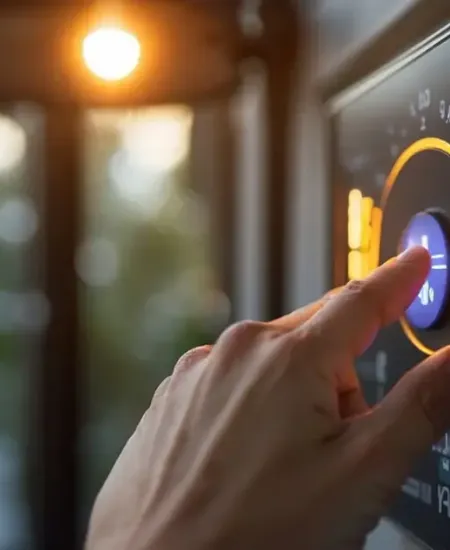Introduction: Why Outdoor Light Timers Are a Holiday Game-Changer
Remember the time when I first ventured into the world of outdoor Christmas decorations? I was armed with more enthusiasm than experience, and it showed. Twinkling lights draped every corner of my yard—a magical scene, until I had to rush out into the frosty night, sometimes in pajamas, to turn them off before bedtime. That's until I discovered outdoor light timers. Game changer? Absolutely. They revolutionized how I enjoyed my holiday displays, and now, I can't imagine going without them.
Outdoor light timers aren't just about convenience; they're about maximizing the joy of the season while managing electricity costs and ensuring safety. Today, I want to share some best practices I've picked up over the years—tips that I hope will light up your holidays (quite literally) without any of the hassle. (nytimes.com)
The Basics of Outdoor Light Timers
Before diving into complex stuff, let's cover the basics. An outdoor light timer is a device that controls the power to your outdoor lighting. You can set it to turn on and off at specific times. This functionality isn't just for Christmas lights; it can apply to garden lighting, patio lights, or any outdoor electrical installations.
Choosing the right timer is crucial. They come in digital or mechanical forms, each with its perks. Digital timers offer more precision and features, like weekday settings or battery backups, which are perfect for when you're away from home. Mechanical timers, on the other hand, are simpler and usually more rugged. Either way, the key is to select a timer rated for outdoor use, which means it should be weather-resistant and suitable for colder temperatures.
If you're pairing timers with roofline lighting, you might want to check out how to mount lights on gutters without causing damage to ensure your setup is both functional and safe.
Setting Up Your Timer: A Step-by-Step Guide
Setting up outdoor light timers might sound straightforward, but believe me, a couple of small missteps can lead to your entire display lighting up at noon instead of dusk. Here's a more foolproof method I've honed over the years:
- Read the Instructions: Yes, it’s tempting to go full speed ahead, but each timer can have its quirks. Spending five minutes reading the manual can save countless hours of troubleshooting later.
- Plan Your Schedule: Decide what you want your lighting schedule to be. Maybe you want your lights sparkling as soon as the sun sets—or perhaps just during peak evening hours.
- Test Your Setup: Test your timer with one light before connecting your entire system. It’s easier to troubleshoot with one set than redoing the entire arrangement.
- Use Weather-Resistant Covers: Most timers are weather-resistant, but extra protection doesn’t hurt, especially in areas with heavy winter conditions.
- Double-Check Everything: Once everything is set, double-check your timer and connections. Ensuring everything is tightly secured can spare you a cold troubleshooting session later.
I made the rookie mistake of ignoring a small fray in the wire during my second Christmas using timers. It wasn't until a particularly chilly December night that I found myself outside, repairing connections while muttering like Scrooge. Lesson learned.
Advanced Tips for Managing Big Displays
If you’re like me and prefer your holiday display visible from outer space, managing multiple strings of lights and decorations requires a bit more finesse:
- Segment Your Displays: Use multiple timers to manage different areas. This approach can help reduce load on a single timer and adds a dynamic flair as different sections light up at different times.
- Opt for Smart Timers: Smart timers connect to Wi-Fi or Bluetooth, allowing you to control settings right from your smartphone. These are particularly handy for making adjustments when you’re not at home, or when laying in bed and realizing you’ve forgotten to switch the lights off.
- Consider Power Requirements: Ensure your timer can handle the load. Overloading a timer can lead to failures and is a potential fire hazard.
- Use the 'Random' Feature Sparingly: Some timers come with a 'random' feature intended to deter burglars by varying the on/off times. While useful, it can interfere with your planned holiday aesthetics.
Safety First: A Reminder
While it’s easy to get caught up in the fun of holiday decorations, safety should never be an afterthought. Always ensure that your setup is up to code. Outdoor-rated timers and extension cords are a must. Also, never overload your circuits; it might be tempting to plug just one more string of lights into the timer, but it’s not worth the risk. A small investment in additional timers can make your system safer and more reliable.
If you're looking to expand your display, consider more advanced installations like designing your own animated light display or building a centerpiece like a Christmas light mega tree.
Wrapping Up: Light Your Holidays the Smart Way
Outdoor light timers are not just about making your life easier; they're about creating a safe, beautiful, and energy-efficient holiday display. I’ve wandered outside in too-cold-for-comfort weather more times than I care to admit before timers became my best friends in holiday decorating. So, buy that timer, set it up right, and enjoy the brilliance of your holiday lights—on schedule and with peace of mind. And hey, staying out of the cold night? That's just the icing on the cake.
I hope these tips help light your holidays as brilliantly as they've done for me year after year. Share your experiences or tips below, and let’s make this season the best lit yet!
Subscribe to our email newsletter and unlock access to members-only content and exclusive updates.

Comments